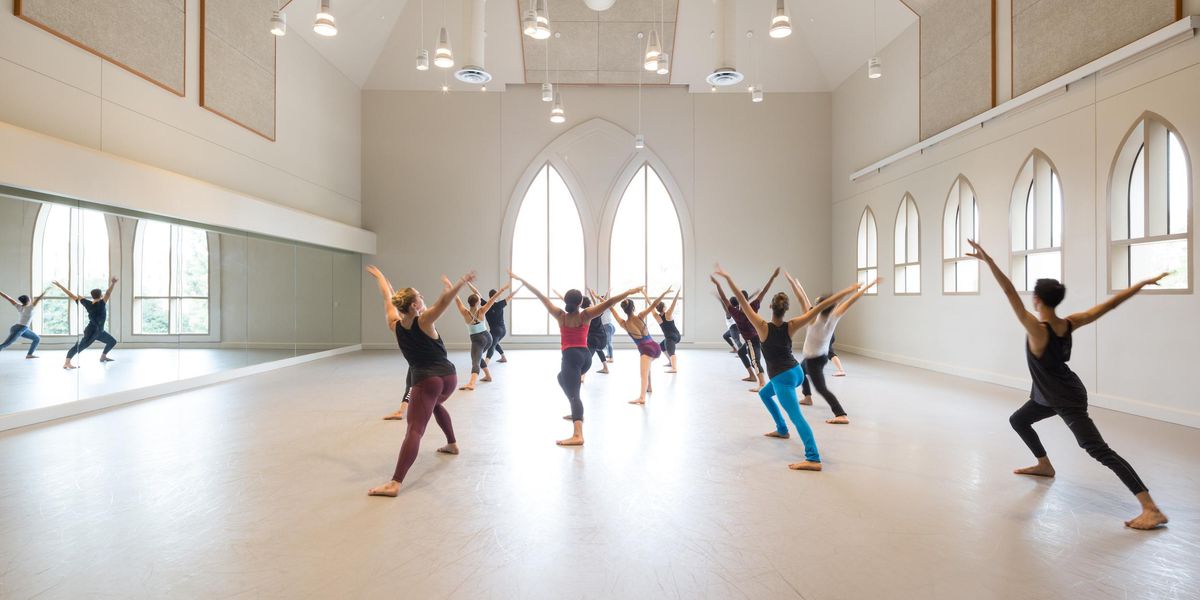Zenon Dance Company
Cowles Center for the Performing Arts
Minneapolis, MN
May 3–12, 2013
Performances reviewed:
May 5 and 12, 2013
Zenon’s 30th spring season offered two different but equally charged programs on successive weekends. They included premieres by New York downtown dancemakers Luciana Achugar and Faye Driscoll and reprises of repertory favorites. Above all the season showcased the spirited diversity and sharpshooter delivery that makes the Zenon dancers so watchable.
In Achugar’s Molten Substance Mary Ann Bradley, Tamara Ober, Leslie O’Neill and Laura Selle Virtucio sizzle in shiny tops and brief black trunks. Their hair hangs in curtains over their faces. Onstage percussionist JT Bates galvanizes a drum set as the women gyrate, thrusting their pelvises aggressively toward the audience. Sometimes their noodling legs and slouchy postures suggest models getting jazzed for the runway. Finally they maneuver themselves into jeans without using their hands as the audience cheers them on. Purportedly about the objectification of the female body, the piece feels more like a harem of Maenads empowered by anonymity. When they finally expose their faces, breathing heavily, they seem affectless and diminished until a small shimmy in each abdomen signals some life force reasserting itself.
Zenon dancers Mary Ann Bradley, Leslie O’Neill, Tamara Ober, and Laura Selle Virtucio in Luciana Achugar’s
Molten Substance
Photo by V. Paul Virtucio, Courtesy Zenon
By contrast Driscoll’s Mariana seems deceptively laid back, a pliant organism that stretches and reconfigures as eight dancers get their groove on while functioning like a well-oiled machine. References to ballet (a finger turn in which a man rotates a woman by tweaking her nose), sports (football huddles, wrestling holds), and cinema (stop-action freezes, slow-mo sequences) function as wry punctuation in a lexicon of shifting gestures and facial mugging. The dancers’ restless tangles give off a tribal vibe. As in the emotional upheavals of adolescence, characters and situations dissolve in an instant, only to be repeated and reframed: a same-sex couple kissing, a campy cameo, a woman whose singing gets cut off by someone grabbing her throat. In the end she’s allowed to sing her song—the alt-rock group Pixies’ “Wave of Mutilation,” which Mary Ann Bradley delivers with poignant grace notes.
An organism of a different kind inhabits Wynn Fricke’s Wine Dark Sea as bodies undulate in sculptural groupings conjuring Homer’s harassed voyagers, sirens, wind and waves. Buoyed up by the haunting sounds of percussionist Peter O’Gorman, the work accumulates a heroic architecture that is both sensual and severe.
From left: Greg Waletski, Tamara Ober, Leslie O’Neill, Stephen Schroeder in Netta Yerushalmy’s
Hello, my name is Catherine.
Photo by V. Paul Virtucio, Courtesy Zenon
Netta Yerushalmy’s Hello, my name is Catherine begins with a brief appearance by Scott Mettille in Renaissance drag. Could this be a reference to Catherine de’ Medici’s patronage of dance and elaborate court spectacles? The entire dance has a raffish feel—as if Yerushalmy were taking the orderly forms of court and folk dance to the point of disintegration and back again. The stage buzzes with baroque dance postures, gestural mumbling, and angular, frenetic movement to Bartók’s driving music. This well-tempered chaos eventually coheres into figures that fumble and revive in fascinating ways. One hesitant circle appears to be trying to decide what it should be—a folk dance? Primal rite? Restless kids waiting around for something to happen? The dancers thrive on the jittery propulsion—especially Stephen Schroeder, who navigates Yerushalmy’s slippery locomotion with elegant nonchalance.
In Mariusz Olszewski’s Hotel Tango (para Sharon), two couples infect a deconstructed tango with louche and lively storytelling, while the four men in Seán Curran’s Hard Bargain devolve from gentlemanly behavior to boisterous slap fests. The chiseled, impassioned dancing of Greg Waletski, who is retiring from Zenon after 22 years, takes Curran’s work to another level. And in Daniel Charon’s kinetic melodrama Storm, Waletski flings himself fully-charged into the whirlwind of movement, as do all these game dancers.
Pictured at top: Zenon Dance Company in Faye Driscoll’s
Mariana.
Photo by Steve Niedorf, Courtesy Zenon




